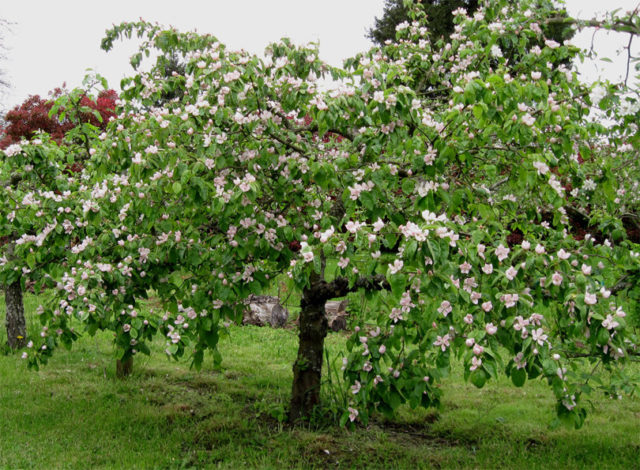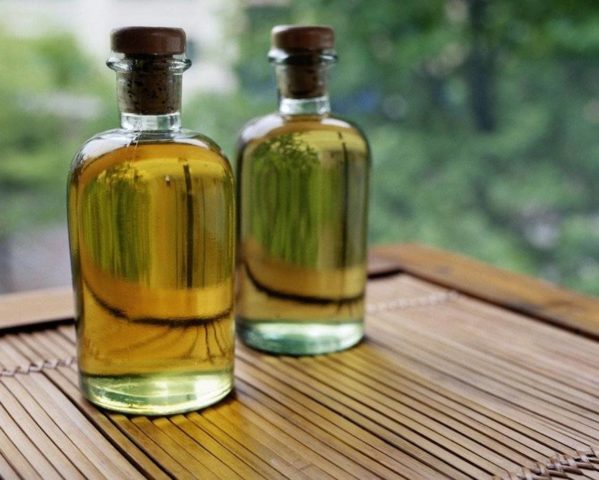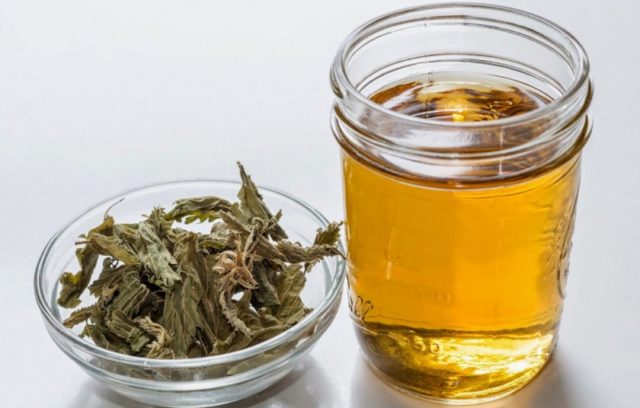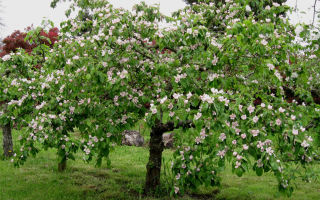Content
The medicinal properties of quince leaves are actively used in folk medicine. Drinks prepared on the basis of natural raw materials relieve acute and chronic ailments.
What does quince look like and where does it grow
Common quince is a deciduous tree from the Rose family, reaching a height of about 3 m. The bark of the plant is thin, dark gray or blackish brown and smooth. Leaves are oval, with a solid edge, with pubescence on the lower surface. As the quince grows, it spreads widely to the sides and forms a dense crown of irregular shape.

The tree blooms in the last days of May, after the final passage of return frosts. The buds stay on the branches for a couple of weeks on average, after which they fall off. In their place, ovaries are formed, from which lemon-yellow fruits will subsequently appear.
In nature, quince can be found mainly in the southern regions. The tree is widespread in the Mediterranean and temperate zones of Asia, in southern and central Europe, Africa, Australia and South America. On the territory of Russia, quince grows in the Caucasus and Crimea, where the soil is fertile, and throughout the year there are enough warm days and sunshine.
Chemical composition
Not only quince fruits have medicinal value, but also its leaves. They contain a large amount of vitamins and minerals, namely:
- potassium, zinc and calcium;
- magnesium and manganese;
- vitamins A and C;
- phosphorus and iron;
- an almost complete group of B vitamins - from B1 to B9;
- selenium;
- polyphenols;
- dietary fiber and pectins;
- vitamins K and E;
- tannins and essential oils;
- organic acids;
- starch and fructose;
- glycoside amygdalin.
Infusions and teas based on quince leaves have a strong beneficial effect on the body. Home remedies can be taken for therapeutic purposes and for disease prevention.
Why are quince leaves useful and what they are treated with
The benefits of quince leaves are used to relieve numerous painful conditions. Infusions and decoctions are used:
- for cuts, wounds and burns, damage is treated with means;
- with bleeding;
- with a lack of iron in the body;
- to fight microbes and inflammation in the oral cavity;
- to improve cell nutrition and replenish potassium and calcium deficiencies;
- to maintain healthy brain activity;
- with nervous disorders;
- with hypertension;
- with elevated blood sugar;
- with pronounced vitamin deficiency.
With the help of quince leaves, metabolic disorders and digestive disorders are treated. The plant helps:
- with diseases of the liver and urinary tract;
- with chronic infectious processes;
- with ailments of the pancreas;
- with bronchitis and cough;
- for colds and sore throats.
For women, the leaves of the plant are especially useful because they have a beneficial effect on the hormonal background and on the appearance. Infusions and teas with quince help to cope with stress and insomnia, relieve severe periods and relieve pain. For men, drinks on the leaves can be taken to treat inflammation of the urogenital area and to maintain general tone.
Preparation and application methods
On the basis of dried leaves, both aqueous and strong alcoholic remedies are prepared for treatment. In both cases, quince is beneficial, but the dosages and rules for use are different.
Tincture
The beneficial substances in the composition of quince leaves fully pass into the alcohol base and dissolve in it in full. Drinking a strong tincture is useful for colds, in the treatment of inflammation and bacterial processes. Quince leaves have a good effect under pressure.
The algorithm for preparing the product looks like this:
- dried leaves are crushed in an amount of 1/2 cup;
- pour 200 ml of alcohol or vodka;
- close the container, shake it and put it away for ten days in a dark and dry place.

From time to time, the tincture needs to be shaken up. After the expiration of the period, the product is filtered through folded gauze, after which it is drunk twice a day, shortly before eating. A single dosage is 20 drops, they must be diluted in 50 ml of water. In this case, it is recommended to continue treatment for no longer than 10 days in a row.
Infusion
Another recipe for traditional medicine suggests preparing an aqueous infusion on quince leaves. It can be used for a wide range of diseases - for the treatment of digestive disorders and colds, with hypertension. Outwardly, warm infusion is used to treat wounds and healing burns, it accelerates tissue repair and prevents the development of inflammation.
Prepare the product as follows:
- dry leaves are crushed and 5 g of raw materials are measured;
- pour a glass of hot liquid;
- placed in a water bath and covered with a lid;
- leave to languish for 15 minutes.

Then the drink must be removed from the heat and kept closed for another 45 minutes. The finished infusion is filtered from the sediment, and then topped up with clean drinking water to the volume of a full glass.
You need to take the remedy for medicinal purposes, 2 large spoons three times a day, shortly before you eat. The drink retains its beneficial properties only for three days; after this period, the leftovers will need to be poured out and a new portion prepared. The infusion should be stored in the refrigerator.
Quince leaf tea
You can use quince leaves as a tea, this drink has a low concentration, but has a beneficial effect on the body. The recipe offers:
- place a handful of dried leaves in a teapot;
- pour hot water at about 80 ° C, you do not need to use boiling water;
- insist under the lid for about five minutes.
The result can be poured into a cup and drunk immediately, or you can pour it back into the kettle and steam the tea leaves for another ten minutes. The color and aroma of the drink only get better, but the benefits and harms of tea made from quince leaves remain the same.
The tool has a good effect on coughs and fever, inflammation in the throat and mouth. You can use it to relieve pain in intestinal pathologies.

Contraindications
Despite its many beneficial properties, in some cases, quince leaves can be harmful. First of all, it is impossible to consume drinks based on them in excessive dosages, in which case hypervitaminosis may occur, the development of an allergic reaction is possible. During the course of treatment, the volumes indicated in the recipes must be strictly observed.
The use of infusions and teas is contraindicated in:
- pleurisy;
- chronic constipation;
- inflammation of the vocal cords;
- individual intolerance.
It is impossible to use medicinal products together with antibiotics and other drugs. Drinks can diminish the effect of official drugs or over-amplify their effect.
With special attention to the beneficial properties of quince leaves and contraindications, pregnant women should be approached. Medicinal drinks are not prohibited for them, but they should be used only in minimal quantities and when necessary. It is necessary to refuse medicinal infusions based on raw materials with a tendency to constipation.
Collection and procurement
The leaves on the branches of quince appear in mid-spring and last until the end of autumn. You can collect them at any time during the warm period. Regardless of the timing, it is best to do this on a clear, dry day.

In traditional medicine recipes, raw materials are used in a dried form. Therefore, after harvesting, the leaves should be spread in a thin layer on a flat surface in a well-ventilated place, away from direct sunlight. It is also allowed to dry the raw materials in the oven, but the temperature in this case should not exceed 50 ° C.
Prepared leaves are placed in a paper bag or container with a sealed lid and sent to storage in a darkened cabinet with low humidity. Raw materials retain valuable properties for about a year.
Conclusion
The healing properties of quince leaves are in demand for colds, inflammatory and digestive ailments. Also, infusions and teas based on the plant can reduce blood pressure with hypertension. There are few contraindications for medicinal drinks, and if the dosages are observed, they will not harm.

